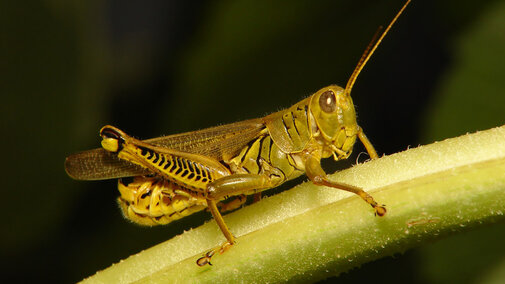Alfalfa Seed Selection
The new free publication, “2023 Winter Survival, Fall Dormancy & Pest Resistance Ratings for Alfalfa Varieties” is now available online through the Alfalfa and Forage Alliance. For Nebraska producers, the two most serious alfalfa diseases are anthracnose and Phytophthora root rot. Both disease symptoms are most devastating on susceptible alfalfa varieties. Therefore, proper seed selection will be the first disease management line of defense. Select improved seed varieties with at least a moderate to high resistance to anthracnose and Phytophthora root rot to effectively prevent yield and stand losses. Also, consult your seed representative to get the best protection for your alfalfa fields.
Anthracnose can appear anytime of the year on any age of alfalfa stand. Affecting stems and crowns, this disease can move rapidly and lower forage production in as little as one to two growing seasons. In some cases, disease stress can reduce alfalfa’s ability to withstand cold temperatures resulting in winter or spring kill.
Phytophthora root rot is the most common root rot affecting all stages of alfalfa causing seedling death. This pathogen can cause seedling damping off in new stands followed by plant death in wet conditions in as little as a few days. In established stands, Phytophthora root rot causes taproot lesions resulting in up to a 50% yield loss and progressive decline over time and potential kill.
More alfalfa disease management information is available on CropWatch. Also, positive alfalfa disease identification can be confirmed by submitting samples to our UNL Extension Plant and Pest Diagnostic Clinic.
Evaluating Alfalfa Plants
As temperatures begin to rise, don’t forget to take a bit of time to assess alfalfa stand health going into this year’s growing season. While much of the state had plenty of snow cover to help insulate plants from extreme temperatures, older stands or late harvested alfalfa still have a potential for winter kill.
Even before plants begin to green up, individual plant assessments can be done. While assessment before green-up occurs may seem a bit preemptive, pre-scouting now can focus scouting efforts to problem areas later on when time becomes precious during spring planting.
- Dig up four to five random plants per 20 acres, being sure to get the crown and a good portion of the tap root (around six inches at least). Split the root and crown open. A healthy plant will be white and firm while winter damaged taproots will be yellow to brown in color and stringy. Yield will begin to be impacted when damage is greater than 30% of the total root/crown area.
- Look for alive, intact basal buds at the crown of the plant. Buds formed last fall will start growth sooner and boost first cutting yields. A lack of basal buds doesn’t mean that the plant won’t recover, but first cuttings may be smaller.
- If plants have begun growth, look at where it is occurring on the crown. Healthy plants will have growth fully throughout the crown while damaged plants will often have asymmetrical growth with more stems on one side than the other.
If more than 30% of the plants assessed have significant damage, yield for the upcoming year may be impacted. Options like interseeding perennial grasses, seeding a warm-season forage crop after the first harvest, or terminating the stand may need to be considered.
Will Last Year’s Drought Lead to Severe Grasshopper Outbreaks?
Based on last year’s drought conditions and 2022 adult grasshopper surveys, much of central and western Nebraska is projected to be moderate to high risk for grasshopper outbreaks this season. Does that mean severe grasshopper outbreaks in forages and rangeland will occur? Not necessarily.
Grasshoppers tend to thrive in dry, hot conditions and are most likely to cause damage in forage and rangeland in areas with less than 30 inches of annual rainfall. The western two-thirds of Nebraska fall into this precipitation category, so why aren’t grasshopper outbreaks a severe issue every year? Outbreaks can be severely limited by cool, wet spring weather conditions. Cool temperatures and more spring rainfall increases the time required for grasshoppers to mature, which increases juvenile mortality. This, in turn, reduces defoliation and the number of eggs produced for the following year’s population.
If spring conditions turn out to be favorable for grasshopper development and potential subsequent outbreaks, there are measures producers can take to mitigate defoliation in forage and rangeland. Properly managing forages and rangeland according to accepted practices can mitigate the effects of grasshopper feeding and scouting when grasshoppers begin to hatch in May will ensure producers stay one step ahead of grasshopper populations.

